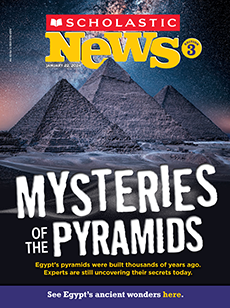Each March, something special happens to kick off the start of spring. The sun shines directly above the equator. This event is called the spring equinox (EE-kwa-nahks).
When the equinox happens, the hours of day and night around Earth are equal in length. That means there are 12 hours of daylight and 12 hours of darkness. This year, the spring equinox will take place on March 20.
For thousands of years, cultures around the world have celebrated the spring equinox. Here are just a few of those traditions.
Each March, something special happens to kick off the start of spring. The sun shines directly above the equator. This event is called the spring equinox (EE-kwa-nahks).
During the equinox, the hours of day and night around Earth are equal in length. That means there are 12 hours of daylight and 12 hours of darkness. This year, the spring equinox will take place on March 20.
Cultures around the world celebrate the spring equinox. They’ve been doing so for thousands of years. Here are just a few of those traditions.

